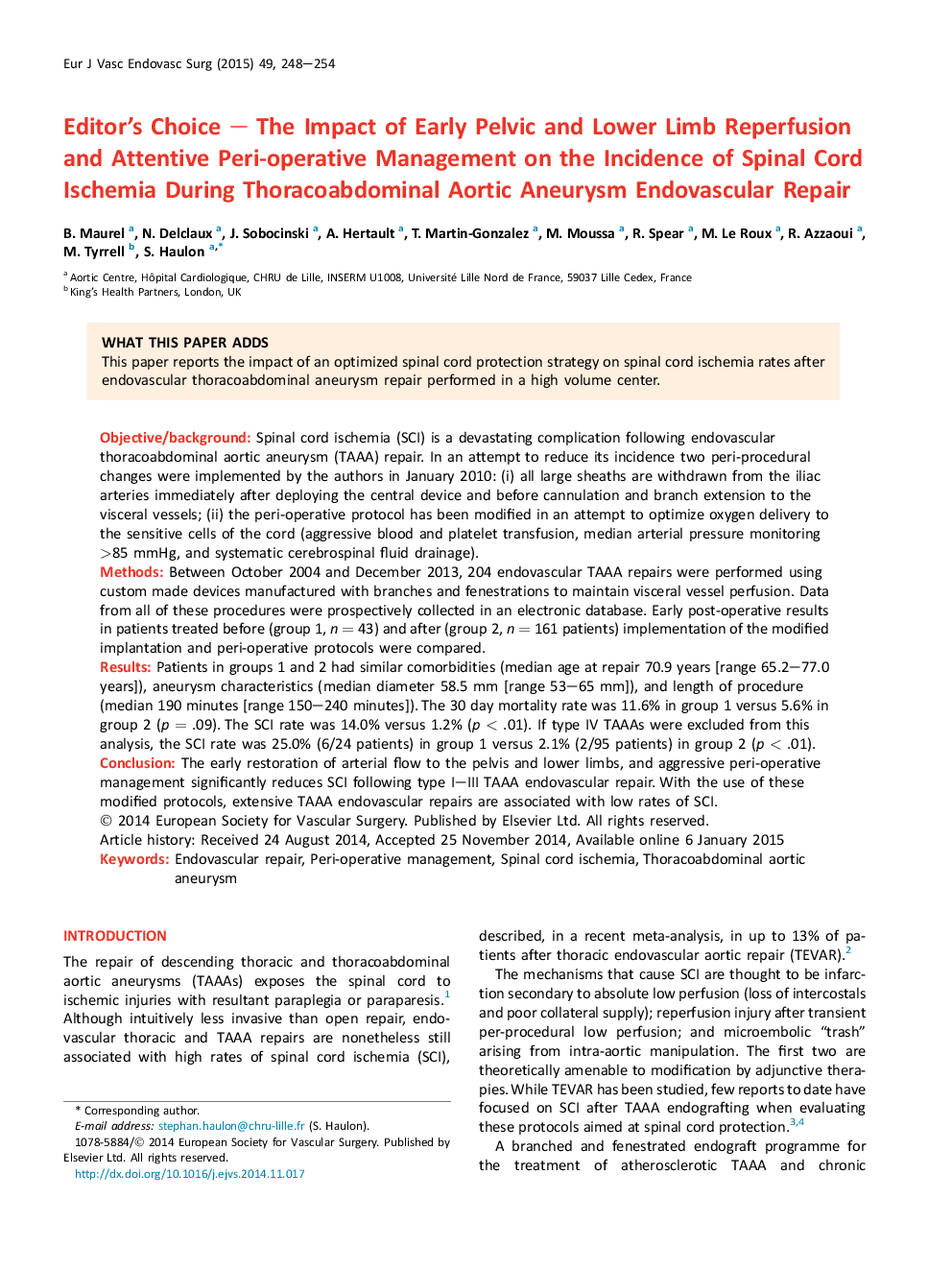| Article ID | Journal | Published Year | Pages | File Type |
|---|---|---|---|---|
| 5958094 | European Journal of Vascular and Endovascular Surgery | 2015 | 7 Pages |
Objective/backgroundSpinal cord ischemia (SCI) is a devastating complication following endovascular thoracoabdominal aortic aneurysm (TAAA) repair. In an attempt to reduce its incidence two peri-procedural changes were implemented by the authors in January 2010: (i) all large sheaths are withdrawn from the iliac arteries immediately after deploying the central device and before cannulation and branch extension to the visceral vessels; (ii) the peri-operative protocol has been modified in an attempt to optimize oxygen delivery to the sensitive cells of the cord (aggressive blood and platelet transfusion, median arterial pressure monitoring >85 mmHg, and systematic cerebrospinal fluid drainage).MethodsBetween October 2004 and December 2013, 204 endovascular TAAA repairs were performed using custom made devices manufactured with branches and fenestrations to maintain visceral vessel perfusion. Data from all of these procedures were prospectively collected in an electronic database. Early post-operative results in patients treated before (group 1, n = 43) and after (group 2, n = 161 patients) implementation of the modified implantation and peri-operative protocols were compared.ResultsPatients in groups 1 and 2 had similar comorbidities (median age at repair 70.9 years [range 65.2-77.0 years]), aneurysm characteristics (median diameter 58.5 mm [range 53-65 mm]), and length of procedure (median 190 minutes [range 150-240 minutes]). The 30 day mortality rate was 11.6% in group 1 versus 5.6% in group 2 (p = .09). The SCI rate was 14.0% versus 1.2% (p < .01). If type IV TAAAs were excluded from this analysis, the SCI rate was 25.0% (6/24 patients) in group 1 versus 2.1% (2/95 patients) in group 2 (p < .01).ConclusionThe early restoration of arterial flow to the pelvis and lower limbs, and aggressive peri-operative management significantly reduces SCI following type I-III TAAA endovascular repair. With the use of these modified protocols, extensive TAAA endovascular repairs are associated with low rates of SCI.
